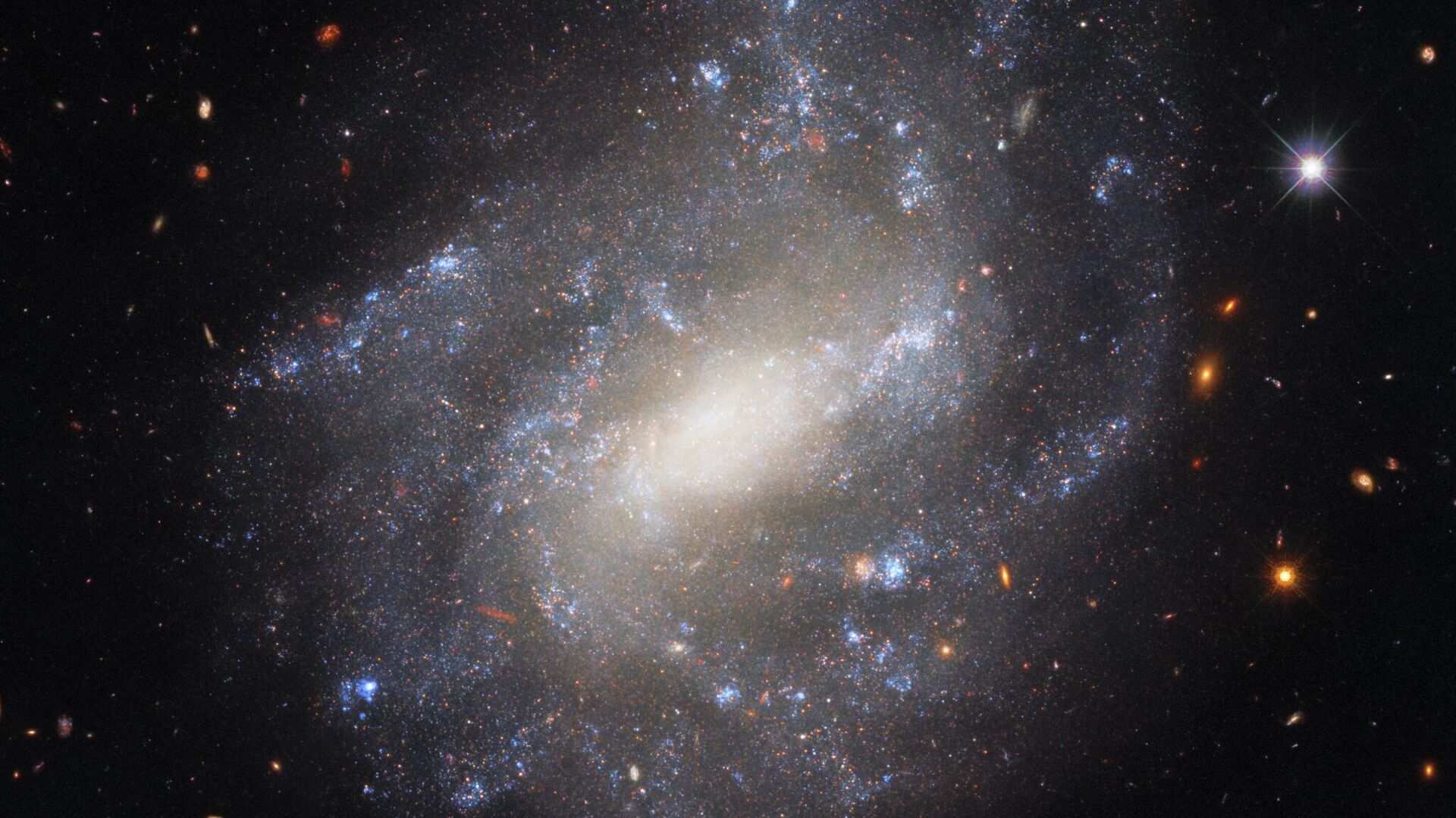https://sputnikglobe.com/20221218/two-deep-space-super-earths-might-be-mostly-water--1105564407.html
Two Deep Space Super-Earths Might Be Mostly Water
Two Deep Space Super-Earths Might Be Mostly Water
Sputnik International
An exoplanet is a planet outside the solar system. For a long time, finding such planets was impossible due to limited technology. However, humanity has been... 18.12.2022, Sputnik International
2022-12-18T11:21+0000
2022-12-18T11:21+0000
2022-12-18T11:21+0000
science & tech
deep space
kepler space telescope
hubble space telescope
spitzer space telescope (sst)
super-earth
https://cdn1.img.sputnikglobe.com/img/07e6/0a/1e/1102850937_0:581:2047:1732_1920x0_80_0_0_e07a1acdb982fd183f4cae33adbbf9cf.jpg
A team of researchers from the University of Montreal led by Caroline Piaulet has found evidence that two exoplanets orbiting a red dwarf may be "water worlds" - planets with a significant portion of their material made up of H20. The exoplanets are 218 light years away in the Lyra constellation and do not resemble any of the planets in our solar system.Researchers state the planets may not have oceans on the planet’s surface like those on Earth.In 2014, the Kepler telescope discovered three planets orbiting the Kepler-138 star. After studying the system with Hubble and Spitzer telescopes, it became clear that the exoplanets Kepler-138c and Kepler-138d are not in the habitable zone (the distance from the star at which liquid water could be present on their surface).
Sputnik International
feedback@sputniknews.com
+74956456601
MIA „Rossiya Segodnya“
2022
News
en_EN
Sputnik International
feedback@sputniknews.com
+74956456601
MIA „Rossiya Segodnya“
Sputnik International
feedback@sputniknews.com
+74956456601
MIA „Rossiya Segodnya“
super-earths in deep space, earthlike planets, planets with water in deep space, kepler planets theory
super-earths in deep space, earthlike planets, planets with water in deep space, kepler planets theory
Two Deep Space Super-Earths Might Be Mostly Water
An exoplanet is a planet outside the solar system. For a long time, finding such planets was impossible due to limited technology. However, humanity has been able to discover their existence more recently thanks to scientific progress.
A team of researchers from the University of Montreal led by Caroline Piaulet has
found evidence that two exoplanets orbiting a red dwarf may be "water worlds" - planets with a significant portion of their material made up of H20.
The exoplanets are 218 light years away in the Lyra constellation and do not resemble any of the planets in our solar system.
"We previously thought that planets that were a bit larger than Earth were big balls of metal and rock, like scaled-up versions of Earth, and that’s why we called them super-Earths... However, we have now shown that these two planets, Kepler-138c and d, are quite different in nature: a big fraction of their entire volume is likely composed of water. It is the first time we observe planets that can be confidently identified as water worlds, a type of planet that was theorized by astronomers to exist for a long time.”
Björn Benneke
Professor of astrophysics at the University of Montreal
Researchers
state the planets may not have oceans on the planet’s surface like those on Earth.
“The temperature in Kepler-138c's and Kepler-138d’s atmospheres is likely above the boiling point of water, and we expect a thick, dense atmosphere made of steam on these planets. Only under that steam atmosphere there could potentially be liquid water at high pressure, or even water in another phase that occurs at high pressures, called a supercritical fluid," said Caroline Piaulet.
In 2014, the Kepler telescope discovered three planets orbiting the Kepler-138 star. After studying the system with Hubble and Spitzer telescopes, it became clear that the exoplanets Kepler-138c and Kepler-138d are not in the habitable zone (the distance from the star at which liquid water could be present on their surface).

